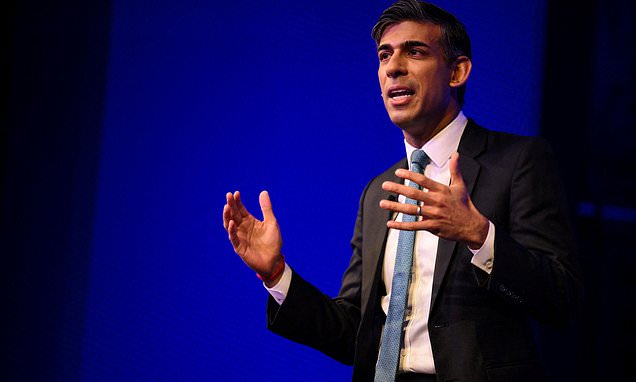Image Source: Getty Images/Roshan Prabhu
Research has shown that spending time outdoors, especially in green spaces, is one of the best ways to reduce stress and anxiety. A 2019 study published in the International Journal of Environmental Health Research showed that just 20 minutes in a park — regardless of if you’re exercising or not — can be enough to improve one’s overall well-being. Nature is healing, and especially for those of us who live in cities, escaping to the outdoors can help us feel more grounded. But ironically enough for Latinx communities, even though many of our parents, grandparents, and ancestors came from countries with hot climates where they spent much time communing with the land, we can often feel like the outdoors aren’t for us.
Statistics show that people of color make up 40 percent of the US population, and yet 77 percent of National Park visitors are white. For years, outdoor activities like swimming, surfing, and hiking have been perceived as activities that “white people do” — by white people and people of color alike.
Fortunately, this is starting to change. More POC-owned companies and organizations are creating accessible and inclusive opportunities for people of color to finally get afuera (outside), with the understanding that nature is an integral part of the human experience. But when we talk about these movements, we rarely acknowledge the accessible outdoor recreation activities that our own ancestral countries have to offer. In fact, one country that’s going out of its way to provide more outdoor activity access — not just to tourists but for local citizens as well — is Puerto Rico.
I recently took a trip to Puerto Rico that completely changed the way I see the island. When people think of PR, they often imagine the country’s capital and robust city of San Juan or the island’s white-sand beaches. But what I discovered on this recent trip is that Puerto Rico — like the rest of Latin America and the Caribbean — has so much more to offer. From the hiking trails found in the island’s central mountains to its famous 7,000-foot-long zip line, Puerto Rico is a place where Latinxs — and not just Boricuas — can experience healing in nature. While this trip was essentially only for three days, in that short amount of time, I felt recharged, refreshed, and connected to nature more than I have all year.
For starters, none of the outdoor activities I embarked on took place in the island’s famous city of San Juan. I stayed at the Embassy Suites by Hilton Dorado del Mar Beach Resort in the town of Dorado, which is west of the capital. Much of the exploring I did there was closer to the island’s central areas like Toa Baja, Vega Baja, and Orocovis.
One of the activities that brought me the most joy was experiencing Puerto Rico’s popular zip-lining at Toro Verde Eco Adventure Park, the largest adventure park in the Caribbean and the Americas. At 7,234 feet long, the park’s zip line, which is often referred to as “the Monster,” was deemed the world’s longest zip line by the Guinness World Records in 2016. (It was eventually beaten by the 9,290-foot-long Jebel Jais Flight in the United Arab Emirates.)
As I zip-lined over Orocovis’s mountains and breathtaking landscapes, I went from initially being filled with adrenaline to finding myself in an all-consuming state of calm and gratitude. The abundance of the mountains and the greenery, combined with the wind powerfully blowing in my face, made it impossible to think about anything else.
Image Source: Johanna Ferreira
Image Source: Johanna Ferreira
I fully took in the experience, allowing myself to be inspired by it all. Another amazing attraction that Puerto Rico offers is wall-climbing at Roca Norte’s Outdoor Climbing Gym in Vega Baja. Created as a result of the natural aftermath of Hurricane Maria and developed by Puerto Rican couple Kenneth Irizarry and Marianela Mercado, Roca Norte offers guided outdoor wall climbing, training, yoga sessions, and a camping area, along with educational activities that include geology workshops and bird-watching.
The story behind what led to Roca Norte seems like pure fate. Mercado and Irizarry were already working as climbing guides on the island before Hurricane Maria hit in September 2017. Before the hurricane, Puerto Rico’s outdoor climbing scene was still in development. The island wasn’t yet known for the sport, and Mercado believes that was partially due to the way outdoor climbing was perceived by locals on the island.
The home that houses Roca Norte is actually Irizarry’s childhood home, and the backyard is where the outdoor climbing walls and cliffs currently exist. But before the hurricane, the entire area was actually covered with trees. The couple had no idea what existed behind their home until all the trees and vegetation were destroyed following the natural disaster. The official death toll on the island following the aftermath of Hurricane Maria was over 3,000 people. Even years following the natural disaster, much of the island was still very much in ruins, power outages continued to be a problem, and many residents’ homes were destroyed and their claims to FEMA denied. Even today, the island has still not fully recovered.
Image Source: Johanna Ferreira
“When we came to the backyard area, we were like, what is all of this? Everything in the backyard opened up,” Mercado shared while I was visiting the site. “We didn’t even know the highway was right there. It was all different.”
Despite the natural landscapes that exist on the island, the traditional mentality has always been that activities like surfing, outdoor climbing, and even swimming are dangerous and only for pros. Mercado and Irizarry developed a mission to change that.
“The roots of outside climbing in Puerto Rico were established around 25 years ago. However, that wasn’t for commercial purposes. It was just people coming from other places,” Mercado says.
About 10 years ago, Mercado says, rock climbing became accessible to almost anyone interested in the sport — but that was predominantly tourists. “Rock climbing internationally hasn’t been something known to be the safest thing,” she says while also explaining how for my local Puerto Ricans on the island, activities like rock climbing have always been perceived as dangerous and for athletic pros only. “There are so many bad stories about climbing generally speaking, but what people don’t know is that there are many types of climbing — some more dangerous than others.”
At Roca Norte, Mercado and Irizarry offer different types and levels of rock climbing, and they’ve welcomed climbers as young as 2 and as old as 78. Their mission is to create greater accessibility for outdoor climbing — not just for tourists but also for local Puerto Ricans, to prove to them that it can be a fun and healthy way to connect with nature.
While I didn’t get very high up on the wall — largely due to my long fingernails — I did take a stab at outdoor climbing at Roca Norte and was left in awe of the beautiful landscape. Taino artifacts have even been found in the area, making me feel even closer to the communities that had inhabited this land before my own adventure. After a day of climbing, getting to know the couple, and reviewing some of those artifacts, I began to feel a deep connection to the land and the island. It was a connection I never necessarily felt when I would only come to visit the city of San Juan.
Image Source: Johanna Ferreira
Image Source: Johanna Ferreira
This was all just a small fraction of what Puerto Rico has to offer when it comes to its recreation practices. The island’s interior mountain region, known as la Cordillera Central, is known for both its agriculture movement — which I also got to experience — and its beautiful hiking trails, caves, and waterfalls. These are all things I intend on checking out the next time I visit the island. Rincón has also made a name for itself as one of the best places to surf in the world.
The biggest thing I took away from this trip? We must reclaim our ancestral connections to our native lands. Even though my family is from the Dominican Republic, connecting with nature in a Latin American country that has such a rich Indigenous history felt spiritual to me. We are living in such a beautiful time in our culture where young Latinxs are reclaiming all the parts of us that have been stripped away by colonization, imperialism, and systems deeply rooted in racism and genocide. We are reconnecting with our ancestors, our land, and nature on our own terms — and what better way to better understand our place in this world than in the great outdoors?
Source: Read Full Article








